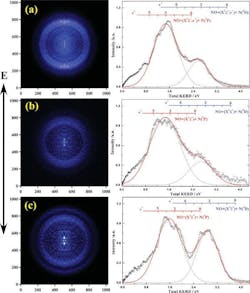Photoelectron-photoion TPEPICO imaging technique sheds light on global-warming gases
Belfast, Ireland--Andor iKon-M cameras are at the heart of a newphotoelectron-photoion coincidence (TPEPICO) velocity imaging technique that can determine the formation pathways of global-warming nitric oxide gases.Andor says that despite its low atmospheric concentration and comical connections, nitrous oxide is no laughing matter and is in fact the fourth largest contributor to global warming behind water vapor, carbon dioxide, and methane, and has replaced CFCs as the dominant ozone-depleting substance emitted by humans--a situation, they say, that is unlikely to change throughout the 21st Century.
Stratospheric ozone is regulated by nitric oxide, formed when nitrous oxide reacts with oxygen atoms. However, even though extensive experimental studies into this reaction have been conducted, the photodissociation mechanism of nitrous oxide, the kinetic energy and internal state distributions of fragments, and the angular distributions of fragment ions are still unclear.
But those mechanisms are becoming better understood thanks to a team working at China's National Synchrotron Radiation Laboratory at Hefei that has used the TPEPICO velocity imaging technique to determine the formation pathways of nitric oxide; the corresponding vibrational state distributions of NO+ have also been identified for every dissociation channel.
"Ultra low noise performance is vital in our work on the photodissociation dynamics of ions," says one of the lead researchers, Xiaoguo Zhou. "At the heart of the experimental apparatus is Andor's thermoelectrically cooled iKon-M 934 camera. Compared to cameras normally used in ion imaging experiments, the Andor camera offered very much lower read noise and high sensitivity over accumulation periods of up to 60 minutes. We also used the Andor Solis software supplied with the camera to process the images. For instance, we would often need to subtract the background and Solis processed the images easily and quickly."
The TPEPICO apparatus was set up at the synchrotron’s U14-A beam line and a continuous supersonic molecular beam of pure N2O gas introduced into the photoionization region through a homemade 30 micron diameter nozzle. Photoelectrons and photoions were collected through a special ion lens to map their velocity images simultaneously and the coincident photoions projected onto a dual microchannel plate backed by a phosphor screen where the Andor DU934N-BV TE-cooled CCD detector recorded the images. By applying a pulsed high voltage on MCP as the mass gate, the three-dimensional (3D) time-sliced image of ions was obtained.
Andor's iKon-M 934 series high-resolution CCD cameras have 95% maximum quantum efficiency (QE), high dynamic range, 13 μm pixels, and exceptionally low readout noise, with negligible dark current and thermoelectric cooling down to -100°C.
SOURCE: Andor; www.andor.com/novel-technique-sheds-new-light-on-global-warming-and-ozone-depletion-021012
IMAGE: A new technique is shedding light on global warming gases:3D time-sliced coincidence images of nitrous oxide and total kinetic energy released distributions at different vibronic levels are shown. The electric vector E of synchrotron radiation is noted as the vertical direction of the image plane, where (a)–(c) are recorded at 20.100, 20.260, and 20.390 eV, respectively, and corresponding to the C(0,0,0), C(1,0,0), and C(0,0,1) vibronic levels. Least-squares fitting of the total KERD curves with two gaussian profiles are plotted with the solid line. This data, which is acquired with the help of an Andor iKon-M camera, is used to gain a better understanding of the characteristics, origins, and concentrations of global-warming gases like nitrous oxide. (Courtesy Andor)
